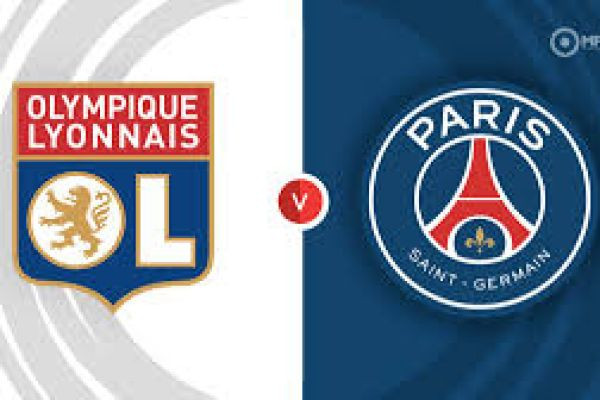The fixture between Olympique Lyonnais (OL) and Paris Saint-Germain (PSG) is the defining rivalry of modern French football. It pits the historical, regional pride of the Rhône-Alpes against the unprecedented financial and star power of the Parisian giant. While PSG's dominance has been near-absolute in the last decade, Lyon views this match as their ultimate test—a chance to prove that technical quality and collective passion can still derail the Parisian machine.
Paris Saint-Germain: Positional Control and Star Dependence
PSG enters every domestic fixture, particularly this one, with the expectation of total control. Their tactical setup is typically a possession-based $4-3-3$ (or sometimes a $3-4-3$), designed entirely to maximize the output of their elite forward line.
PSG’s Strategic Pillars:
Overload the Flanks and Centralize Stars: PSG utilizes highly advanced full-backs (or wing-backs) to provide the width, stretching the opponent's defense horizontally. This allows their world-class attackers (like Mbappé and his partners) to operate centrally and in the half-spaces, where they can execute quick combinations and decisive vertical runs.
Midfield Tempo and Pivot Protection: The midfield trio is responsible for meticulous ball circulation, patiently probing Lyon's compact defense. The deep-lying pivot (the number six) is crucial, protecting the center-backs from Lyon’s lightning-quick counters and ensuring immediate ball recovery via a counter-press.
High Pressing and Pinning: Upon losing the ball, PSG immediately swarms the nearest Lyon player, aiming to win the ball back in the opposition’s half. This sustained pressure is designed to wear down Lyon's defensive concentration and force technical errors.
The chief vulnerability for PSG is the structural imbalance created by their forward commitment. If Lyon bypasses the initial counter-press, the space between PSG's aggressive full-backs and isolated center-backs is vast, allowing Lyon's speedy forwards a clear path to the goal.
Olympique Lyonnais: Defensive Resilience and Transitional Speed
Lyon’s approach against PSG is typically pragmatic and intense, shifting away from their preferred possession game to a disciplined defensive structure. They usually adopt a compact $4-2-3-1$ or $4-3-3$ that prioritizes central density and rapid transition.
OL’s Strategic Mandate:
Central Suffocation: Lyon’s primary tactical goal is to deny PSG space in the central areas and the half-spaces. The midfield (often a strong double pivot) operates closely with the back four, creating a dense, organized low block that forces PSG out wide into harmless crossing positions.
Exploiting the Wings: Offensively, Lyon relies entirely on the speed of their wingers and forwards. Upon winning possession, the transition must be immediate and vertical, bypassing PSG's midfield press with long, accurate passes into the channels behind PSG’s high-pushing full-backs.
The Fekir/Aouar Role (The Modern Playmaker): Lyon requires a technically gifted player operating in the number ten position to handle the ball under pressure, link the defense to the attack, and find the killer pass in the transition phase. This role requires immense composure.
Set-Piece Threat: Given the limited open-play opportunities, Lyon must maximize every dead-ball situation, utilizing their aerial threats to capitalize on PSG's occasional defensive lapses.
Lyon’s main challenge is sustaining physical and mental concentration for the full $90$ minutes. A single moment of fatigue or loss of defensive shape is often all PSG's star attackers need.
Key Decisive Tactical Conflicts
The outcome of the Classique hinges on three critical factors:
The Star-Power Breakthrough: Can PSG’s elite individuals (Mbappé, Dembélé, etc.) consistently break down Lyon’s deep, organized low block through dribbling or quick, creative combinations? Lyon's central defenders must be faultless in their positioning and communication.
Full-Back vs. Counter-Winger: The duel between PSG's advanced full-backs and Lyon's high-speed wingers will decide the game's flow. If Lyon's wingers succeed in forcing the PSG full-backs to defend, PSG’s offensive machine stalls; if they fail, Lyon is pinned back permanently.
The Groupama Factor: When played at Lyon's home stadium, the atmosphere is fierce. The crowd provides an immense psychological lift, demanding high-intensity pressing. Lyon must use this energy to force early PSG errors, as early goals can completely shift the psychological momentum of the contest.
Cultural Context and Prediction
The rivalry is rooted in the early 2000s when Lyon won seven consecutive titles, a dominance that PSG's ownership later erased. This history adds a layer of genuine hostility. The financial disparity is enormous, making any Lyon victory a monumental moral success that energizes the entire league.
Expect an intense, high-octane affair with distinct periods of play: PSG controlling possession ($70\%$+) and Lyon defending deep before launching three or four lightning-fast counter-attacks. The match is usually decided by fine margins—a set-piece, a penalty, or a moment of unmatched individual brilliance from a PSG attacker.
The overwhelming quality and depth of the Parisian squad make them favorites, but Lyon's grit and home support are undeniable. A likely result is a narrow $2-1$ victory for Paris Saint-Germain, but one where Lyon makes the champions work harder than almost any other team in the league.








